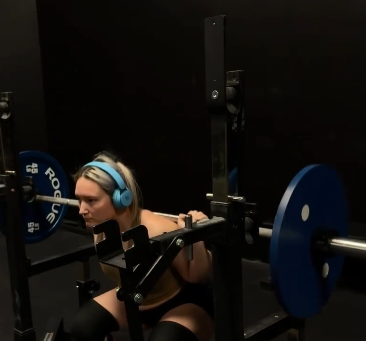Finding the Right Frequency in Weight Training
Written by the Boostcamp staff
How Many Days a Week Should You Lift Weights?
Embarking on a weightlifting journey is a commendable decision for those seeking improved fitness, strength, and overall well-being. Whether your goal is powerlifting or bodybuilding or some other end goal, there is a lot that can go into this venture. That being said, one of the common questions that often arises when starting out in the gym is, "How many days a week should I lift weights?" People want to lift every day, as it is fun and exhilirating, hitting those one rep maxes and seeing yourself pack on some muscle mass and strength, but this may not always work out the way you want it. Lifting every day may not be the answer to making linear gains, but lifting too little also may not be the answer.
The answer to this question isn't one-size-fits-all, as it depends on various factors, including individual goals, experience level, and overall fitness objectives. The Boostcamp team is going to break down what exactly goes into your training routines, and how many days a week you should be hitting the weights.
Factors Influencing Training Frequency

The first thing we are going to take a look at it are the factors that influence your training frequency.
Training Goals
The frequency of weightlifting workouts is closely tied to your fitness objectives, what you are trying to get out of it. If your primary goal is bodybuilding and muscle growth (hypertrophy), you may benefit from training certain muscle groups more frequently throughout the week with. On the other hand, if you aim for strength or endurance, your approach might differ.
When strength training, you might not be training each muscle group as frequently and you could find yourself focusing more on the big compound lifts being the squat, the bench press, and the deadlift.
Experience Level
Beginners and advanced lifters may have different needs when it comes to training frequency. Novices often require more time for recovery, and they may make more gains in the first few months of lifting as their bodies are adjusting to the new stimulus. On the other hand, experienced lifters are not going to make as many gains as fast as they have been doing it for quite some time, and they also might be able to handle higher training frequencies due to their adapted bodies.
Intensity and Volume
The intensity and volume of your weightlifting sessions play a crucial role. High-intensity workouts where you are going all out and really exhausting yourself, workouts that push your limits may necessitate more recovery time between sessions, while lower-intensity workouts might allow for more frequent training.
The same rule goes with your volume work. If you are doing high volume workouts that really take a toll on your body, you should not be doing them every day. This will affect your training frequency.
Overall Lifestyle and Recovery
Consideration of your lifestyle and recovery practices is vital. Factors such as sleep, nutrition, and stress levels impact your body's ability to recover. If these factors are not adequately addressed, overtraining and burnout become real concerns. Not only that, but you risk injuring yourself, and that can put you out of the gym for far longer than you would like.
Training Frequency Guidelines

Now that we have established what factors affect your training frequency, let’s take a look at the guidelines.
Beginners (2-3 Days/Week)
Novices are advised to start with 2-3 weightlifting sessions per week, allowing for sufficient rest between workouts. It may sound like far too little, but this is not true at all, especially for beginners. This frequency permits the body to adapt gradually while minimizing the risk of injury. It also is a good way for beginners to get into the gym and really learn the different exercises and find what they enjoy when it comes to training.
Intermediate (3-5 Days/Week)
As you progress and your body becomes more accustomed to weightlifting, you may gradually increase training frequency to 3-5 days per week. This allows for more targeted muscle training and potential progress in strength and endurance.
Advanced (4-6 Days/Week)
Advanced lifters, who have developed a strong foundation and efficient recovery strategies, may engage in weightlifting 4-6 days per week. However, it's crucial to listen to your body and incorporate active rest days to prevent burnout and overtraining.
Different Training Splits
The different training splits that you choose will also greatly affect your frequency. For example, if you train an individual muscle group, like arms, in a training session, you will probably be doing this once per week. On the other hand, there are training splits that have you training each muscle more frequently.
Push Pull Legs: The push pull legs split is exactly what it sounds like. On the push day you train the chest, the shoulders, and the triceps together (pushing muscles). On the pull day you train the back and biceps together (pulling muscles). Then on the leg day, you train the quads, the hamstrings, the glutes, and the calves together (leg muscles).
Upper Lower: The upper lower split divides the body into two parts, upper and lower. On the upper days you train the upper body, then on the lower days you train the lower body. You also can do the PHUL split, which divides the body into the upper and lower but has one upper day dedicated to power, one to hypertrophy, and the same goes for the legs.
Where to Find Workouts
Finding a good workout program to help guide you when it comes to finding how many days a week you should lift weights. Keep in mind that good programs will help with your fitness journey, you would want to find a program that caters to your needs and guides you in the right direction, making sure that you are making the most gains. If you are looking to stay on track and continue with linear progression, then finding a good workout program is the key. Where do you look for a good workout program? Check out the Boostcamp App for some great programs.
Boostcamp is home to over 50 FREE workout programs that consist of strength, hypertrophy, or functional fitness, or both, from the push pull legs program all the way to upper lower, there are so many programs to choose from that can help fit your needs. However, with Boostcamp, you don’t have to just follow a pre-written program (although each program is written by a professional), you also can create your own program as well, and track your progress to make sure you are on the right track. That being said, when you are looking to incorporate some serious training to further your powerlifting progress, then check out Boostcamp.
Conclusion
Determining the optimal frequency for weightlifting is a personal journey that involves understanding your goals, experience level, and overall lifestyle. There is no one-size-fits-all answer, but rather a spectrum of possibilities. It's essential to find the right balance between training and recovery, paying close attention to your body's signals along the way. Consulting with fitness professionals or trainers can also provide valuable insights tailored to your specific needs, helping you design a workout routine that aligns with your goals and promotes long-term health and fitness.
Be sure to follow Boostcamp on Instagram and subscribe on YouTube!


